Follow live coverage of Argentina vs Ecuador in 2024 Copa America today
A picture is worth a thousand words.
One that USMNT fans won’t forget is Gregg Berhalter signalling to his players during their match on Monday night that Bolivia had equalised against Panama in the other group game going on at the same time, which meant that his side could stay level with Uruguay and qualify for the quarter-finals.
Advertisement
But that feeling only lasted 14 seconds because, with Uruguay’s next attack, Mathias Olivera scored from the rebound after Matt Turner had saved Ronald Araujo’s header. Initially, the goal looked offside, but another angle showed it was much closer than it initially seemed.
Toenails, armpits and shoe sizes have decided marginal offsides in recent years, but Berhalter’s team needed to match or better Panama’s result to qualify, and the Americans’ bigger problem was their inability to break down Uruguay’s defence.
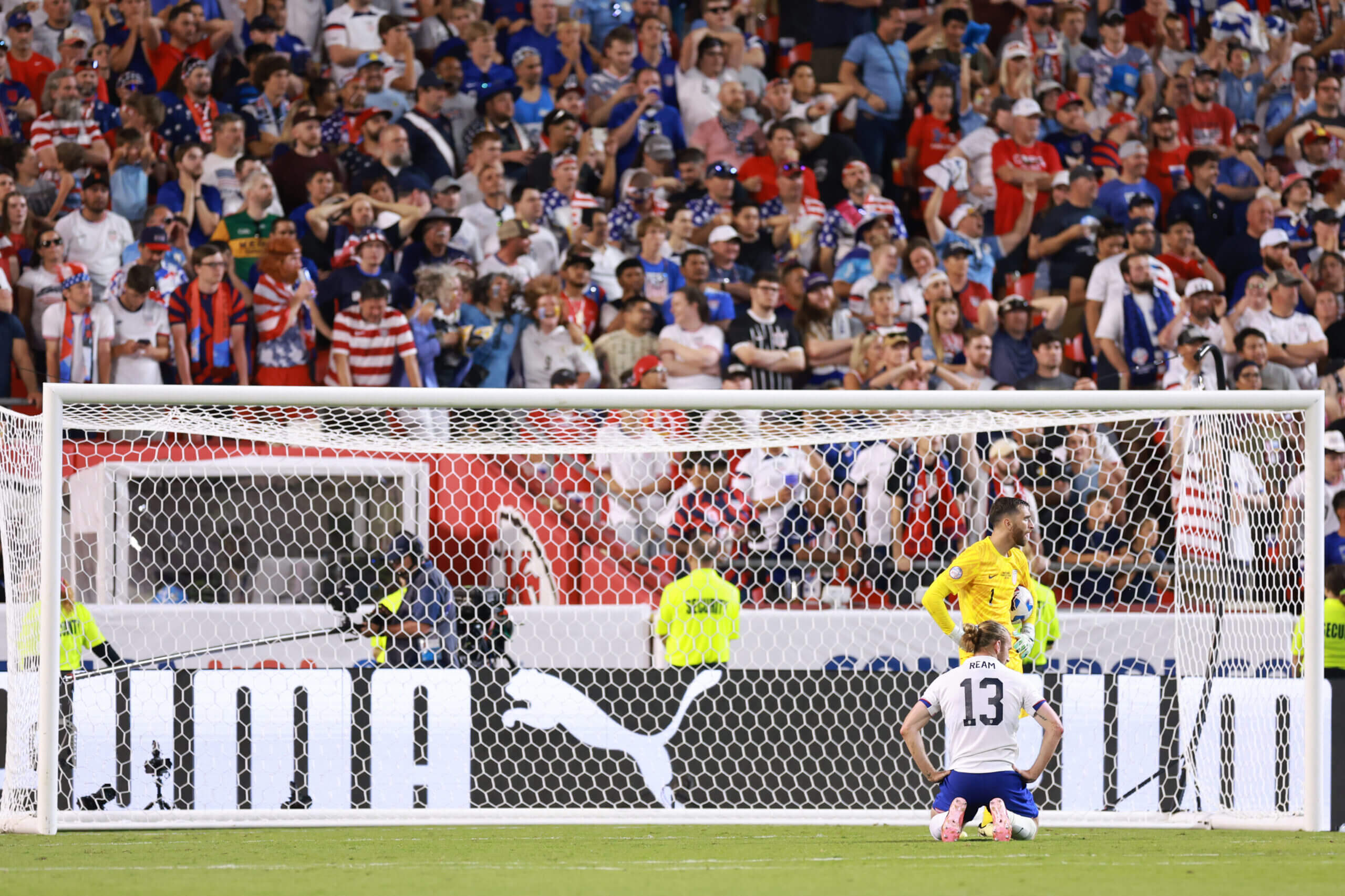
Usually, Marcelo Bielsa teams operate with a man-marking approach that has one player less in attack and an extra player in defence. Against USMNT’s 4-3-3 in Kansas City last night, Darwin Nunez was left to press Tim Ream and Chris Richards, allowing Araujo and Olivera to be in a two-versus-one situation against Folarin Balogun while the remaining Uruguay players man-marked their American counterparts.

In midfield, Nicolas de la Cruz kept an eye on Tyler Adams, and behind him Federico Valverde and Manuel Ugarte man-marked Yunus Musah and Weston McKennie.

This version of the USMNT has mainly focused on attacking the wide areas, but that took a hit in this game with Sergino Dest’s ongoing absence through injury and Tim Weah’s suspension after his red card against Panama.
Still, Berhalter’s side focused on combining down the flanks to try to find Antonee Robinson’s overlapping runs down their left or McKennie’s roams from midfield — only 24 per cent of the USMNT’s attacking touches came in the middle third of the pitch.
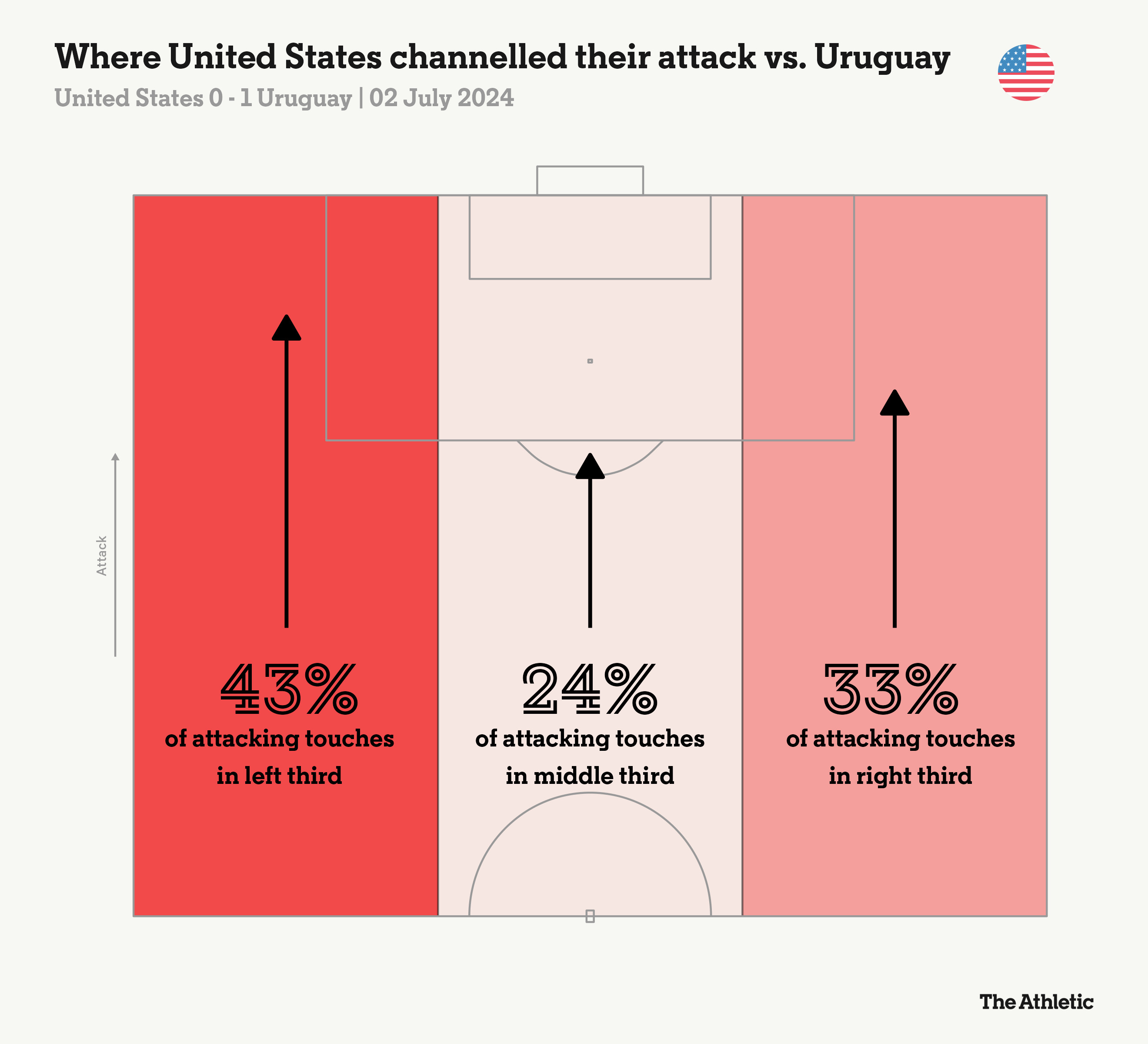
Normally, rotating positions and quick-passing combinations are an effective solution against man-marking schemes, but Uruguay’s players were constantly one step ahead. In particular, Ugarte and Valverde tracked McKennie and Musah across the pitch to halt passing combinations in the wide areas.
In this example, Ugarte isn’t tightly marking McKennie in the centre circle when Gio Reyna switches the play to Christian Pulisic on the other wing.
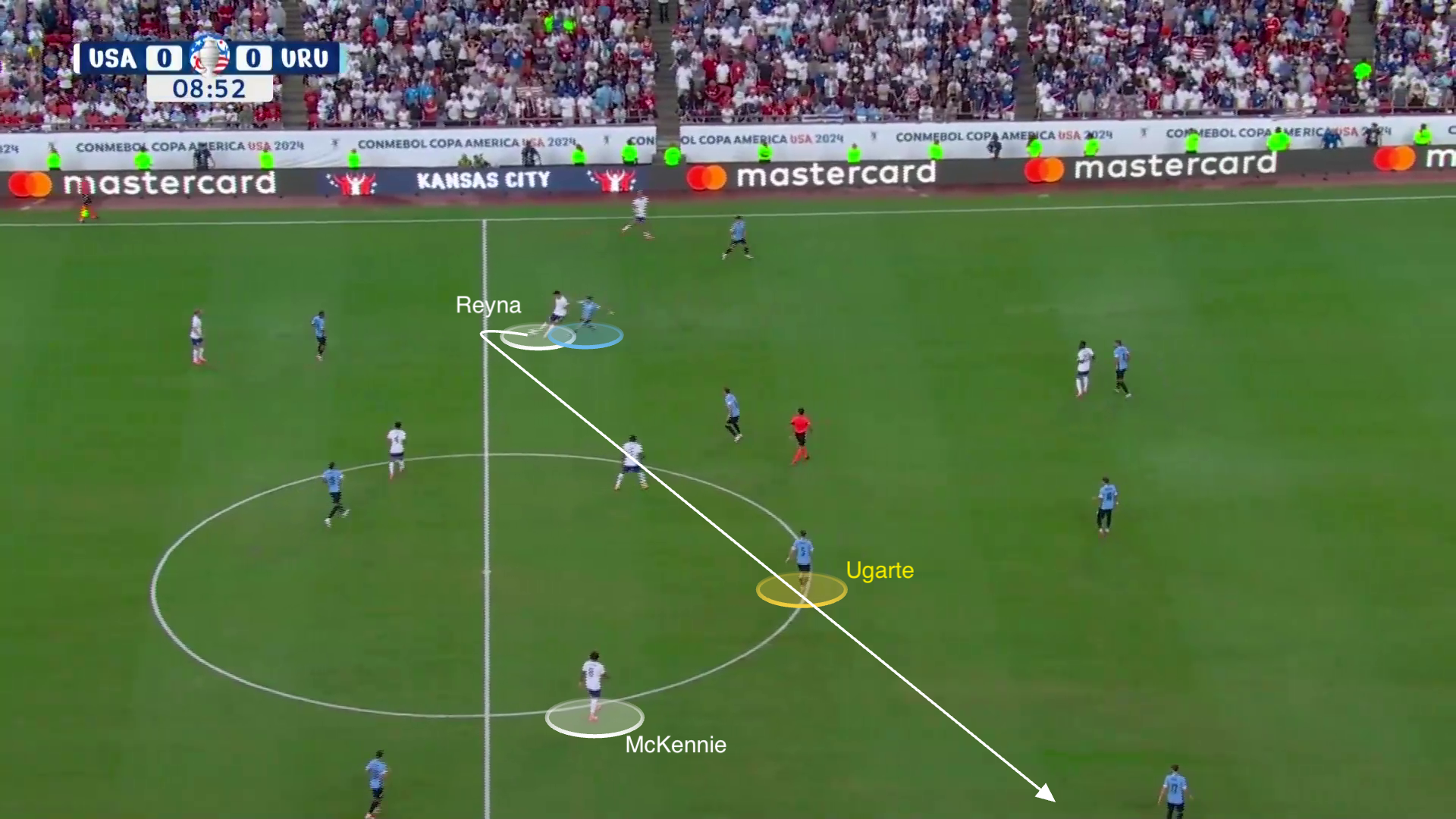
Once Pulisic controls the ball, however, Ugarte shifts his focus towards McKennie and matches his run…

…which forces the right-winger to move backwards and reset the attack.

The brief switch of positions between Pulisic and McKennie doesn’t catch Uruguay out because Ugarte drops into the left-back space to mark USMNT’s right No 8 and cover for his left-back, Matias Vina, who moves up to maintain the pressure.
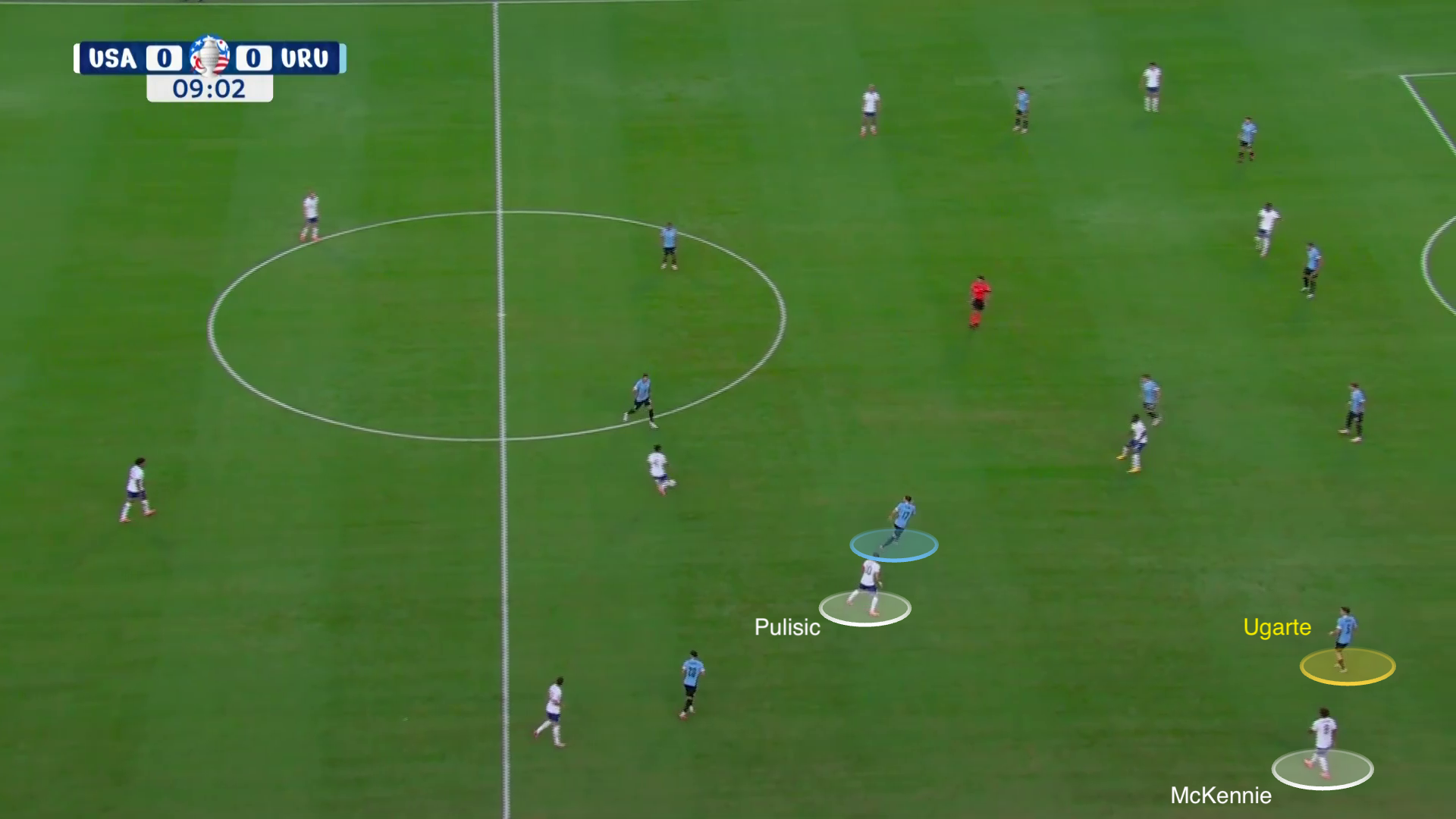
Even when McKennie tried to overload the left side of the pitch, Ugarte followed him.
Here, Ugarte, De la Cruz and Valverde are marking USMNT’s midfield three.

Berhalter’s side try to play over the defence with Reyna dragging Uruguay’s right-back, Nahitan Nandez, higher up the pitch and McKennie attacking the vacant space, but are unsuccessful.
Again, Ugarte is sticking tightly to the Juventus midfielder and follows him, while Araujo, who is Uruguay’s free man at the back, moves across to assist.


In another example, Musah moves towards the right side to overload that area and assist with the passing combinations. However, Valverde is nearby when McKennie plays the ball to Pulisic…

… and the right-winger’s pass for Musah is intercepted by the Real Madrid midfielder.
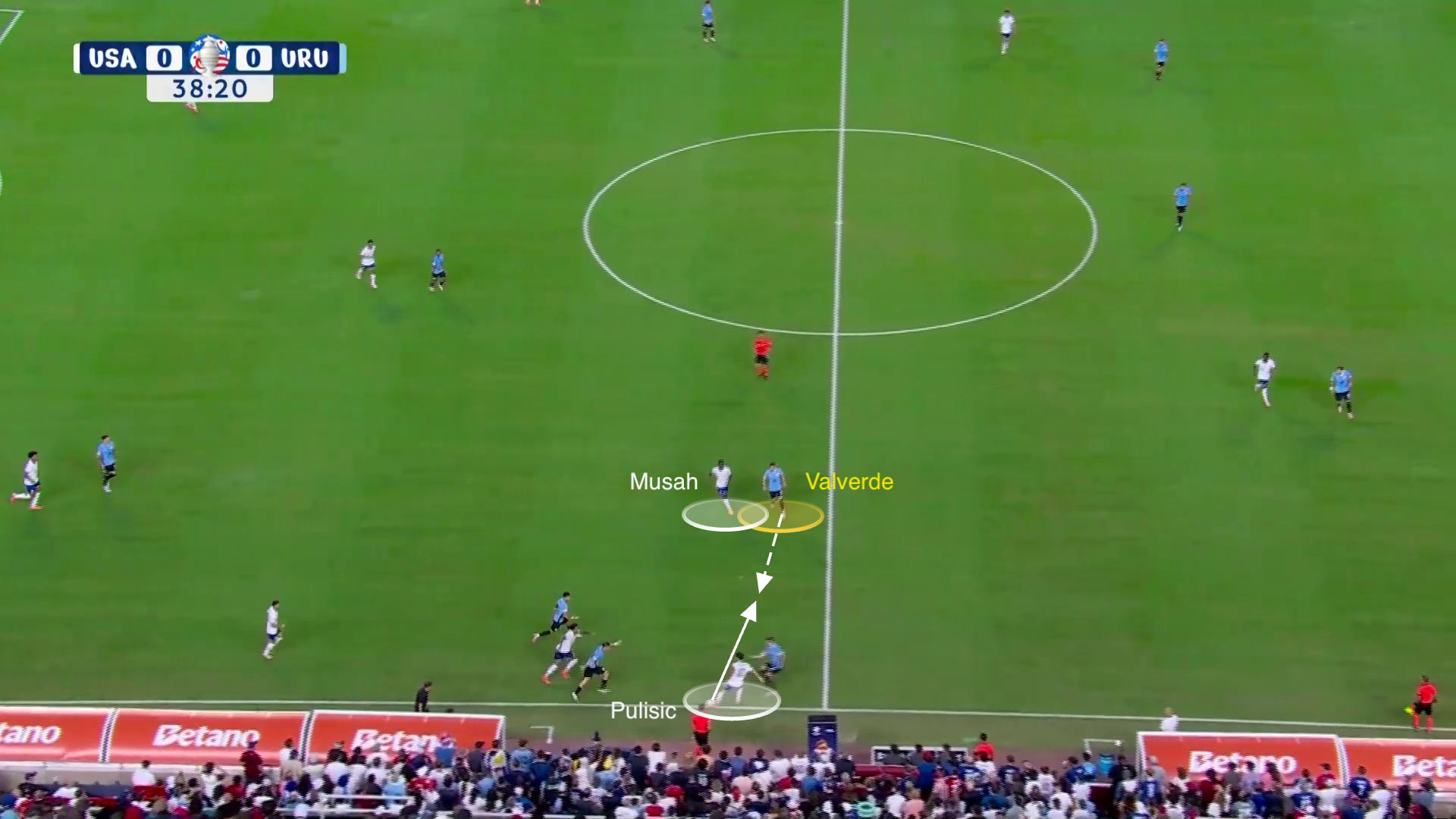
Ugarte and Valverde screened Uruguay’s defence and stopped the opponents’ wide combinations.
When looking at the locations of the duo’s defensive actions, Ugarte and Valverde swept the pitch from one touchline to the other, which illustrates their man-marking roles.

Down the American left, Reyna regularly moved inside to create space for Robinson, but Facundo Pellistri’s defensive shift meant the Fulham left-back only managed two crosses in the 90 minutes.
Here, Pellistri drops to cover for Nandez when Uruguay’s right-back moves infield to track Reyna. Ricardo Pepi flicks a pass into the path of Reyna…
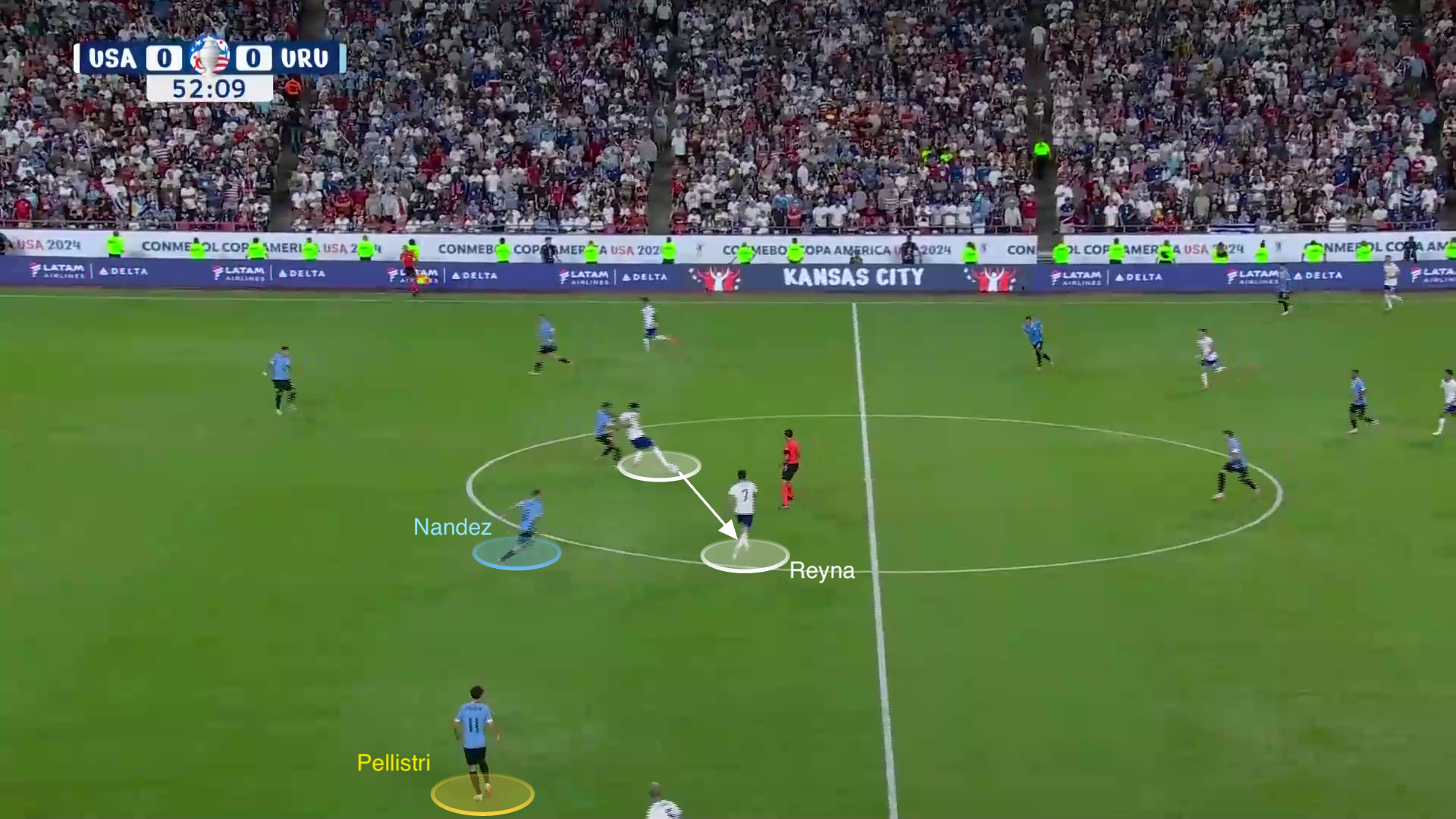
…and the forward spins Nandez before playing the ball into space to try to find Robinson’s overlapping run. Pellistri is caught out by the pass…

…but his initial positioning puts him in place to defend the cross that follows.
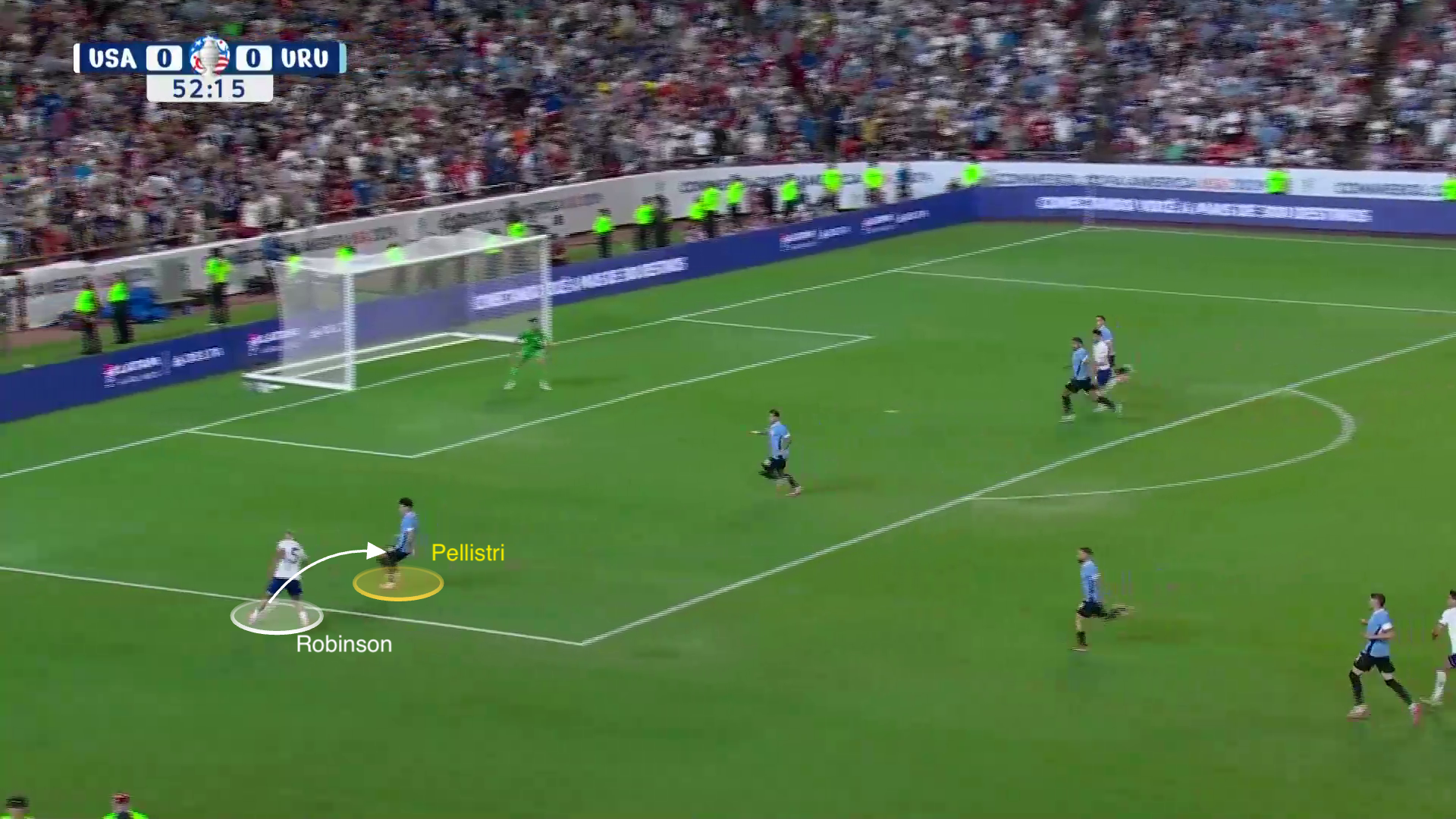
In another example, Pellistri’s role in marking Robinson allows Nandez to cover for Araujo when the centre-back moves up with Pepi. Reyna tries to attack the vacant space in Uruguay’s defence, but McKennie’s pass is intercepted by the right-back.


In an attempt to get back into the game at 1-0 down, Berhalter introduced Josh Sargent in place of Musah and moved to a two-striker system. Uruguay reacted with Ugarte dropping deeper to help his centre-backs and maintain an extra man in the defensive line.

Then, when Haji Wright came on for Joe Scally and McKennie moved to right-back, Ugarte maintained his deep position to make sure the home side didn’t overload the last line. Meanwhile, Uruguay’s wingers dropped to track Robinson and McKennie, who were providing the width with Reyna and Pulisic operating in midfield.
In stoppage time, Bielsa’s team moved to a clearer back five after Sebastian Caceres replaced Ugarte.

“We knew that they are very aggressive, very man-orientated, in midfield and we felt if we had a lot of mobility in midfield it would unbalance them,” Berhalter said after the game. “That’s the reason why we started Yunus in midfield and Gio as a winger.”
However, Uruguay’s positioning off the ball and tight marking nullified the USMNT’s movements and prevented their players from combining in the wide areas.
Advertisement
In what was a must-win game for Berhalter’s team, Uruguay’s marking shackled them and shut off any chance of progress to the tournament’s knockout stage.
Instead of us writing another thousand words on what happened to the USMNT at Arrowhead Stadium, a simple chart of their starting line-up’s passing network does the job much more efficiently:
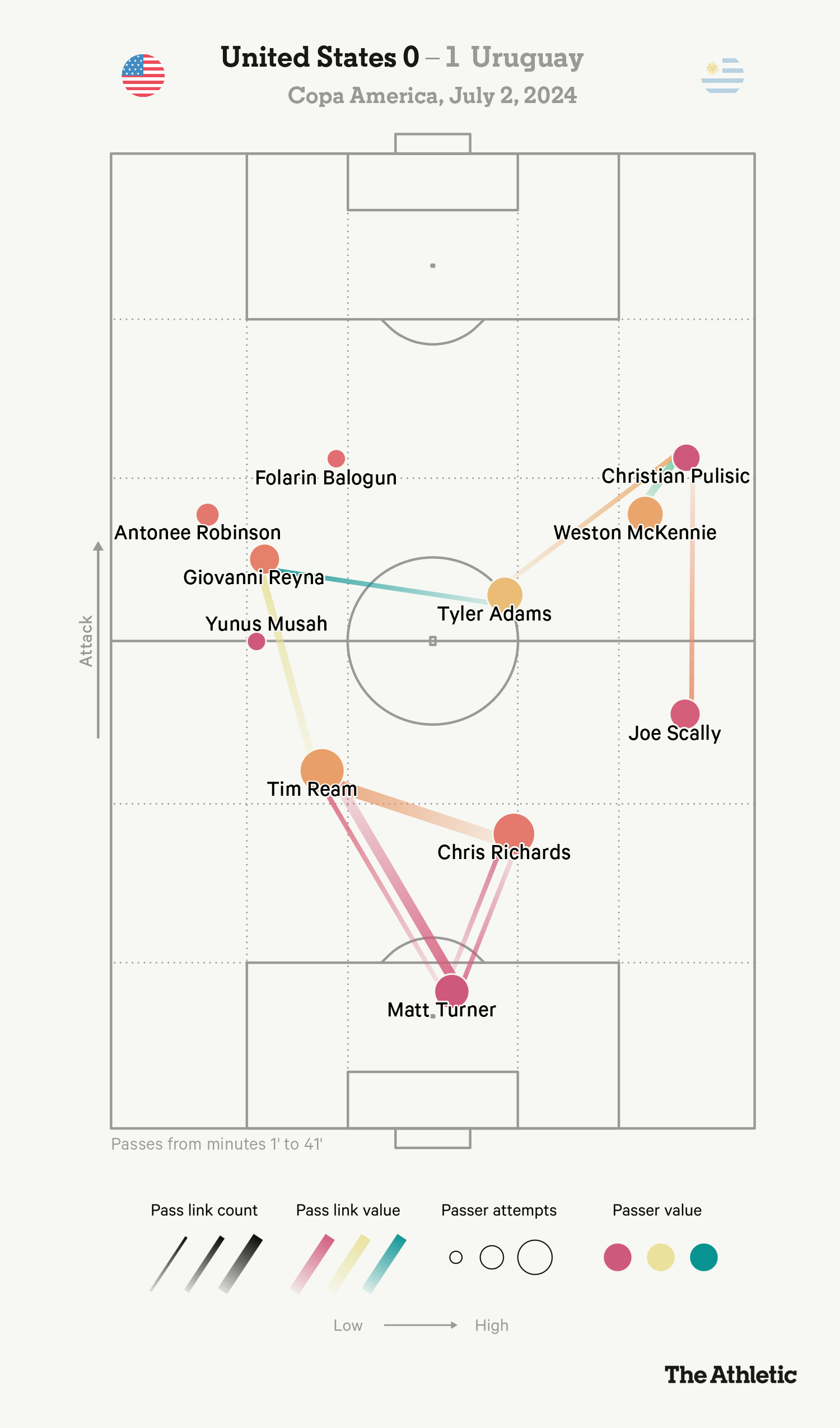
(Top photo: John Dorton/ISI Photos/USSF/Getty Images for USSF)

